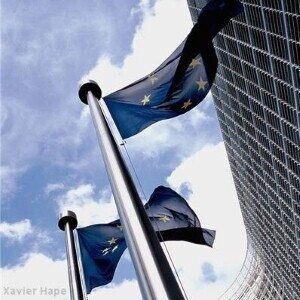Environmental laboratory
What is the Stockholm Convention?
Jun 04 2024
The Stockholm Convention on Persistent Organic Pollutants (POPs) is an international environmental treaty designed to eliminate or restrict the production and use of persistent organic pollutants. These toxic chemicals, which include pesticides, industrial chemicals, and by-products, are known for their longevity, bioaccumulation, and potential for long-range environmental transport. The convention, which entered into force in 2004, aims to protect human health and the environment from these hazardous substances.
Why was the Stockholm Convention introduced?
In the late 20th century, scientific research began to uncover the significant health and environmental impacts of persistent organic pollutants. POPs were found to remain in the environment for extended periods, travel long distances through air and water, and accumulate in the fatty tissues of living organisms. Their toxic effects, including cancer, reproductive disorders, and immune system disruptions, posed serious risks to both humans and wildlife.
Recognizing the need for global action, the international community, under the leadership of the United Nations Environment Programme (UNEP), initiated negotiations for a legally binding agreement. The Stockholm Convention was adopted on May 22, 2001, and entered into force on May 17, 2004, following the 50th ratification. To date, the convention has 185 parties, underscoring its global significance.
What does the Stockholm Convention ban?
The Stockholm Convention aims to eliminate or reduce the release of POPs into the environment. The convention initially targeted twelve POPs for elimination or restriction, known as the "Dirty Dozen." These included eight pesticides (such as DDT), two industrial chemicals (PCBs and HCB), and two groups of by-products (dioxins and furans).
Parties are required to take legal and administrative measures to eliminate or restrict the production, use, and trade of POPs. This includes phasing out existing stocks and ensuring safe disposal.
The convention addresses unintentional production of POPs, such as dioxins and furans, by promoting best available techniques (BAT) and best environmental practices (BEP) to minimize their release from industrial processes.
Each party must develop and implement a national implementation plan, outlining the strategies and measures they will take to meet their obligations under the convention.
The convention emphasizes the importance of public awareness and participation, requiring parties to promote information exchange and involve the public in decision-making processes.
How has the Stockholm Convention evolved over the years?
The Stockholm Convention is a dynamic treaty, capable of evolving to address new scientific knowledge and emerging challenges.
Since its adoption, the convention has expanded its list of regulated substances to include additional POPs, such as brominated flame retardants and perfluorinated chemicals. This process is based on scientific assessments and recommendations from the POPs Review Committee.
To assess the effectiveness of the convention, a global monitoring plan was established. This plan tracks the presence of POPs in the environment and human populations, providing data to inform policy decisions.
The convention has developed mechanisms to support developing countries in meeting their obligations. This includes technical assistance, capacity building, and financial support through the Global Environment Facility (GEF).
Does the Stockholm Convention need further amendments?
The Stockholm Convention has achieved significant progress in reducing the production and use of POPs, but challenges remain.
While many countries have made strides in implementing the convention, disparities remain, particularly in developing nations. Limited resources, lack of technical expertise, and inadequate infrastructure hinder full compliance.
The discovery of new POPs and the potential for other harmful chemicals to meet the criteria for POPs necessitate continuous updating of the convention’s list. This requires robust scientific research and international cooperation.
Illegal trade in POPs and the existence of stockpiles in some regions pose ongoing risks. Effective enforcement and monitoring mechanisms are essential to address these issues.
Climate change can influence the distribution and effects of POPs, complicating efforts to control their impact. Understanding these interactions is crucial for developing adaptive strategies.
The Stockholm Convention represents a landmark in international environmental policy, addressing the global threat posed by persistent organic pollutants. Its comprehensive framework and adaptive mechanisms have facilitated significant progress in protecting human health and the environment. However, continued efforts are necessary to overcome implementation challenges, address new and emerging chemicals, and enhance global cooperation. As environmental threats evolve, the Stockholm Convention remains a critical instrument in the global fight against toxic pollution.
Digital Edition
IET 35.2 March
April 2025
Air Monitoring - Probe Sampling in Hazardous Areas Under Extreme Conditions - New, Game-Changing Sensor for Methane Emissions - Blue Sky Thinking: a 50-year Retrospective on Technological Prog...
View all digital editions
Events
May 10 2025 Karachi, Pakistan
May 11 2025 Vienna, Austria
May 11 2025 Seoul, South Korea
Salon Analyse Industrielle & Instrumentation
May 14 2025 Paris, France
May 15 2025 Istanbul, Turkey






_(4427399123)-(2).jpg)












